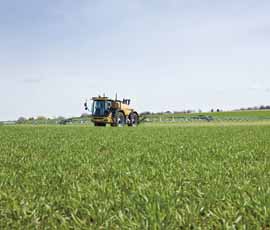VIDEO: Crop Watch – nitrogen management

Mild weather this winter has produced lush, forward winter crops which will require careful management this spring, say our Crop Watch agronomists.
“The mild weather has had a huge impact on our agronomic starting point this spring,” says Marion Self of Prime Agriculture in eastern England.
“It has encouraged well-tillered, forward cereal crops, weed growth and disease development while having no impact on aphid survival.”
Yellow and brown rust pustules are already being found, says Ms Self. “Susceptible varieties will receive a triazole holding spray during February to prevent disease build up prior to T0.
“We also need to ensure that crops are protected against BYDV and control any over-wintered aphid populations that can spread the virus during the spring,” adds Ms Self.
Marion Self assesses direct-drilled wheat.
Forward wheat and rape crops are also causing problems in the southern region and holding them back is a priority for Iain Richards of Masstock.
“We have a serious dilemma, mainly because we’re using nitrogen:sulphur compounds that come in fixed ratios and are already on farm, ready and waiting,” he explains.
“We have to get sulphur on to rape early, but the last thing that most of our crops need if they are to stay standing is nitrogen,” says Mr Richards.
“Plant growth regulation will also give us far more of a challenge this season and we’re planning particularly robust PGR programmes,” says Mr Richards.
Assessing the soil and crop nutrient status is important when deciding when to apply early nitrogen, says Hamish Coutts, independent agronomist from Perthshire.
“There should be no great rush to apply early nitrogen once the NVZ shutters are open in a fortnight’s time,” says Mr Coutts. “Crop nitrogen levels are more than adequate for the time being,”
Light leaf spot in his oilseed rape crops are causing a concern, especially those which missed out on an autumn fungicide due to challenging spraying conditions in Scotland.
“An early application of flusilazole and prothioconazole should be included in the schedule where required,” adds Mr Coutts.
Mild weather not only results in ideal growing conditions for disease, but also for weeds, and herbicide programmes should be continued while targets are still small.
“Oilseed rape crops that were big enough before Christmas have been treated with carbetamide,” says Bryce Rham, independent agronomist, Shropshire. “Remaining crops that were more forward have been opened up by frosts since and another cold week will allow us to finish them off.”
“Atlantis (iodosulfuron+mesosulfuron) and Broadway Star (florasulam+pyroxsulam) programmes in cereals will be resumed in early March, due to the much earlier germination of target weeds,” says Mr Rham.
Manganese deficiency should be monitored on light land crops, with Mr Rham having already applied the trace element during January.
“This is not the norm and we may have to treat in February, depending on growing conditions,” he adds.
Wheat bulb fly egg hatch has begun, although the risk is somewhat lower than spring 2011 says Ms Self. “Crops should be monitored carefully for damage and if required, sprays should be deployed to reduce the impact of the pest.”

